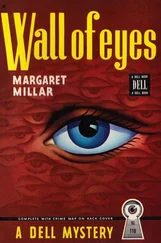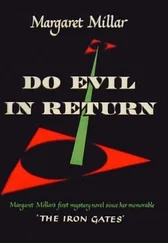“Wave action had rolled her over and over and her body was — well, there’s no better word than tangled.”
“Was it wrapped around her whole body?”
“Yes, sir. She had to be extricated by cutting away the kelp that held her.”
“And how was this done?”
“With a serrated knife.”
“So that when the body was taken aboard the Priscilla , it was not in exactly the same condition as when it was first spotted, a good deal of the kelp having been cut away before the body could be moved. Is that correct?”
“Yes, sir. The stuff’s strong and rubbery. Kids often use it on the beach as jump ropes.”
“You have explained what the holdfasts of the plant are, and the stalk, or stipe. What are these leaflike things?”
“They’re called blades.”
“And these bulbous protuberances about the size of thumbs, what are they?”
“Hollow, gas-filled chambers known as floats. The name is self-explanatory.”
“Would you explain it anyway for the benefit of those of us not so biologically oriented?”
“Kelp, like an ordinary plant that grows on land, needs light for the process of photosynthesis, and floats keep it close to the surface where the light is.”
Donnelly addressed the bench. “At this point, Your Honor, I would request that Miss Foster bring in the three pieces of modeling clay I gave her earlier. They will be my next exhibits.”
This was done, and the first piece of modeling clay was put on the table beside the fresh kelp.
“This is ordinary modeling clay,” Donnelly told the jury, “and I’m going to ask Lieutenant Sommerville to press into it two of the floats of this kelp so that we may study the impressions. Will you do that please, Lieutenant?”
“How hard do you want me to press?”
“Just as hard as you think the kelp was wrapped around Mrs. Pherson’s throat.”
“I can’t be sure of that, but I can make a rough guess.”
The impressions were made, and the piece of clay was shown to the district attorney, then passed to the judge and then to each member of the jury. When this procedure was concluded, the lieutenant was asked to press each of his thumbs into the second piece of clay, exerting approximately the same amount of pressure. At Donnelly’s request he initialed the impressions with a felt-tipped marking pen. This second piece of clay was also passed to the district attorney, the judge and the jury, and the lieutenant returned to the witness box.
“Would you say, Lieutenant, that the indentations left by the two kelp floats and those left by your thumbs are about the same size?”
“Yes, sir.”
“Is there any noticeable difference?”
“Yes, sir.”
“What is this difference?”
“My thumbnails left a semicircular impression that is clearly visible.”
“In other words, the fleshy tip of each thumb is defined by the indentation of the nail?”
“That’s what I perceive, yes, sir.”
“At this juncture,” Donnelly said, “I would like to ask the court’s permission to have my client, Mr. King, be allowed to follow the same procedure with the third piece of clay as the lieutenant did with the second. Do I have Your Honor’s permission?”
“This is quite irregular,” the judge said. “But at the moment I can think of no valid reason why it shouldn’t be allowed.”
Cully had not been forewarned of this move, and he registered the surprise Donnelly had hoped he would. Even the most obtuse juror could see the surprise was genuine and not just part of a ploy arranged by defendant and counsel.
Handed the piece of modeling clay, Cully pressed one thumb and then the other into it and initialed the marks with the same pen used by the lieutenant. Again the clay was passed to the district attorney, the judge and jury and, finally, the man on the stand.
“Lieutenant Sommerville, do these two impressions resemble those made by your own thumbs?”
“Yes, sir.”
“There are similar indentations left by thumbnails, are there not?”
“Yes, sir.”
“I believe that at this point the jury should have the opportunity to reexamine plaintiff’s exhibits through sixteen-P. For this reason I would ask that thirteen-M, four-teen-N and fifteen-O be passed among the jurors and that sixteen be put on the display board.”
Exhibit M-13 was a normal-sized photograph of Mrs. Pherson’s head and throat as first seen by the pathologist, Dr. Woodbridge. N-14 and 0-15 were enlargements of the throat itself, and P-16 was an enlargement of the grooves found on it.
“Lieutenant, I would like you to examine all these photographs carefully. Will you do that?”
“Yes, sir.”
“Very carefully now, would you tell us which of the pieces of clay these photographs resemble?”
“I strongly object,” the district attorney said. “Human flesh is not clay. To compare the two is absurd.”
Donnelly went along with the objection without argument. “Very well, I withdraw the question and would instead ask that the next ten items be lettered as defendant’s exhibits. I’ve forgotten what letter we’re at now, but I’m sure Miss Foster knows.”
The ten exhibits were books on homicide investigation and forensic pathology. All of them contained bookmarks, and a few had several. Viewing the formidable pile of books, the judge declared a twenty-minute recess.
During the recess Oliver Owen called his wife from the pay phone in the main corridor. It was something he often did when he was frustrated and annoyed. He would never have admitted it to anyone, least of all to Vee herself, but the sound of her voice was soothing and made him feel that even if she disagreed with him verbally, she was completely on his side.
Vee was at her desk in the small alcove of the kitchen, paying the more urgent bills and setting aside the others. There was never enough money to pay all of them at once.
“Is that you, Vee?”
“I think so. There’s no one else here.”
“I wanted to tell you I’ll probably be late for dinner.”
“That’s all right. We’re having beef stew and French bread. Both can be heated up in a jiffy.”
“How are the boys?”
“They were fine at breakfast. I assume they’re still fine since I haven’t heard anything to the contrary... What’s wrong, Oliver?”
“That creep Donnelly is trying to pull a fast one. What intelligent person would believe that that woman fell overboard into a bed of kelp and was strangled to death by one of the strands? But we’re not dealing with intelligent persons; we’re dealing with jurors.”
“I hope you’re in a place where you can’t be overheard.”
“Of course I am. Do you take me for a fool?”
“It’s easy to get a bit careless. To be on the safe side, you could lower your voice slightly.”
He lowered his voice. “Have you ever heard of anyone being strangled to death by kelp? ”
“How did she get into the kelp?”
“Donnelly implies that she fell overboard, and while unconscious but still technically alive, she became entangled in the kelp.”
“That’s dumb. Boats stay away from the kelp beds, especially big boats like the Bewitched .”
“What did you say?”
She repeated it word for word.
“Why, Vee,” Oliver said in a surprised voice. “Why, Vee, what an amazing piece of reasoning. You’re right, you’re absolutely right.”
“Once in a while us morons get lucky and come up with something intelligent almost like real people.”
“You mustn’t put yourself down, Vee.”
“Oh, I won’t. I always have someone to do it for me.”
“I mean it. Sometimes you’re very intelligent.”
“Hurray for me.”
“Of course, the boat didn’t go anywhere near the kelp. In order to get into the stuff, she’d have had to swim for it. If it was just a matter of wave and current action, it would probably take hours. In water that cold a person might be able to live a short time but definitely not hours. Even staying alive a short time is highly unlikely. Vee, you might help me win this case yet.”
Читать дальше
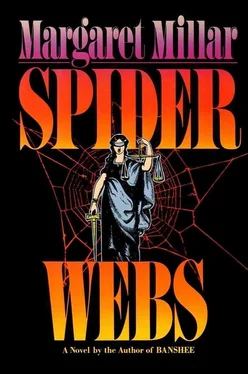

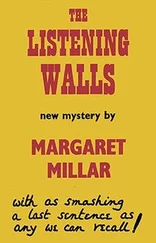
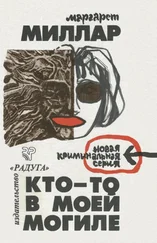
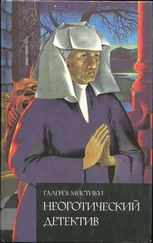


![Маргарет Миллар - Rose's Last Summer [= The Lively Corpse]](/books/384369/margaret-millar-rose-s-last-summer-the-lively-c-thumb.webp)
